On February 21, Minister of Culture, Sports and Tourism Nguyen Van Hung signed Decision No. 374/QD-BVHTTDL on announcing the List of national intangible cultural heritage.
Accordingly, the Decision to include the Traditional Craft "Tuy Loan Rice Paper Making" in Hoa Phong Commune, Hoa Vang District, Da Nang City in the National Intangible Cultural Heritage List. The Chairman of the People's Committee of Da Nang City, within the scope of his duties and powers, shall carry out state management in accordance with the provisions of the law on cultural heritage for the Traditional Craft "Tuy Loan Rice Paper Making".
"I did it, my child did it and my grandchild will do it too."
About 15 km west of Da Nang city center, there is a 500-year-old ancient village lying peacefully by the Tuy Loan river. Here, there are more than a dozen households still preserving tradition and making a living by making rice paper completely by hand.
According to the elders, the traditional craft village of Tuy Loan rice paper ( Hoa Phong commune, Hoa Vang district) is more than 500 years old, so for the people here, rice paper is not only a means of livelihood but also has a very special cultural meaning. This is an indispensable dish on death anniversaries, ancestor worship or holidays, Tet but also a gift of Tuy Loan people in particular, Da Nang people in general to give when going far away.
Having been involved in the rice paper making profession for more than half of her life, Ms. Dang Thi Tuy Phong (84 years old, residing in Tuy Loan Dong 2 village, Hoa Phong commune) shared that when she was very young, seeing her parents and grandparents doing this job, she also helped them do it, did it over and over again until she became proficient and has been doing it until now.
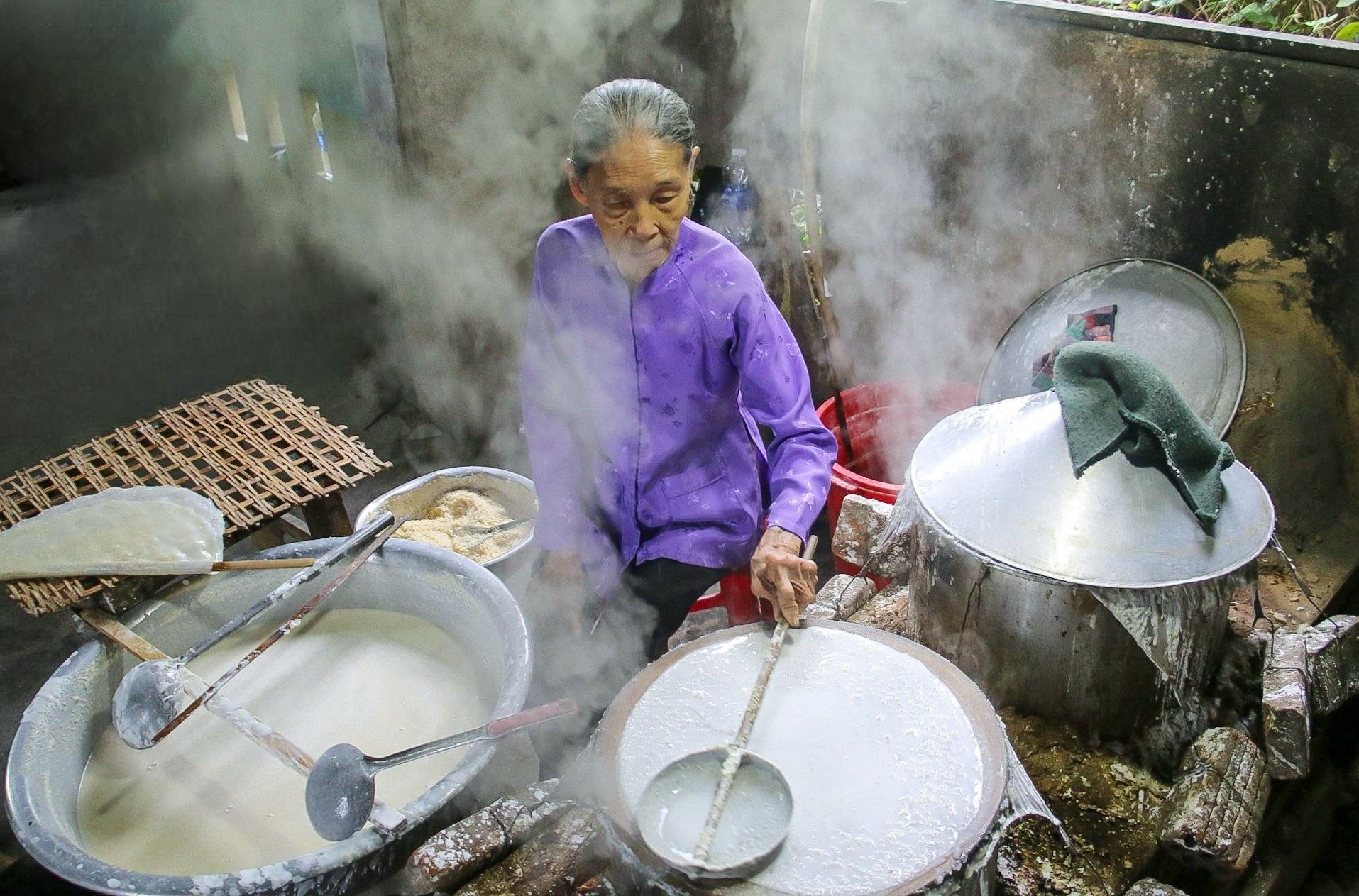
At 84 years old, Mrs. Dinh Thi Tuy Phong still works diligently by the stove to create delicious rice paper.
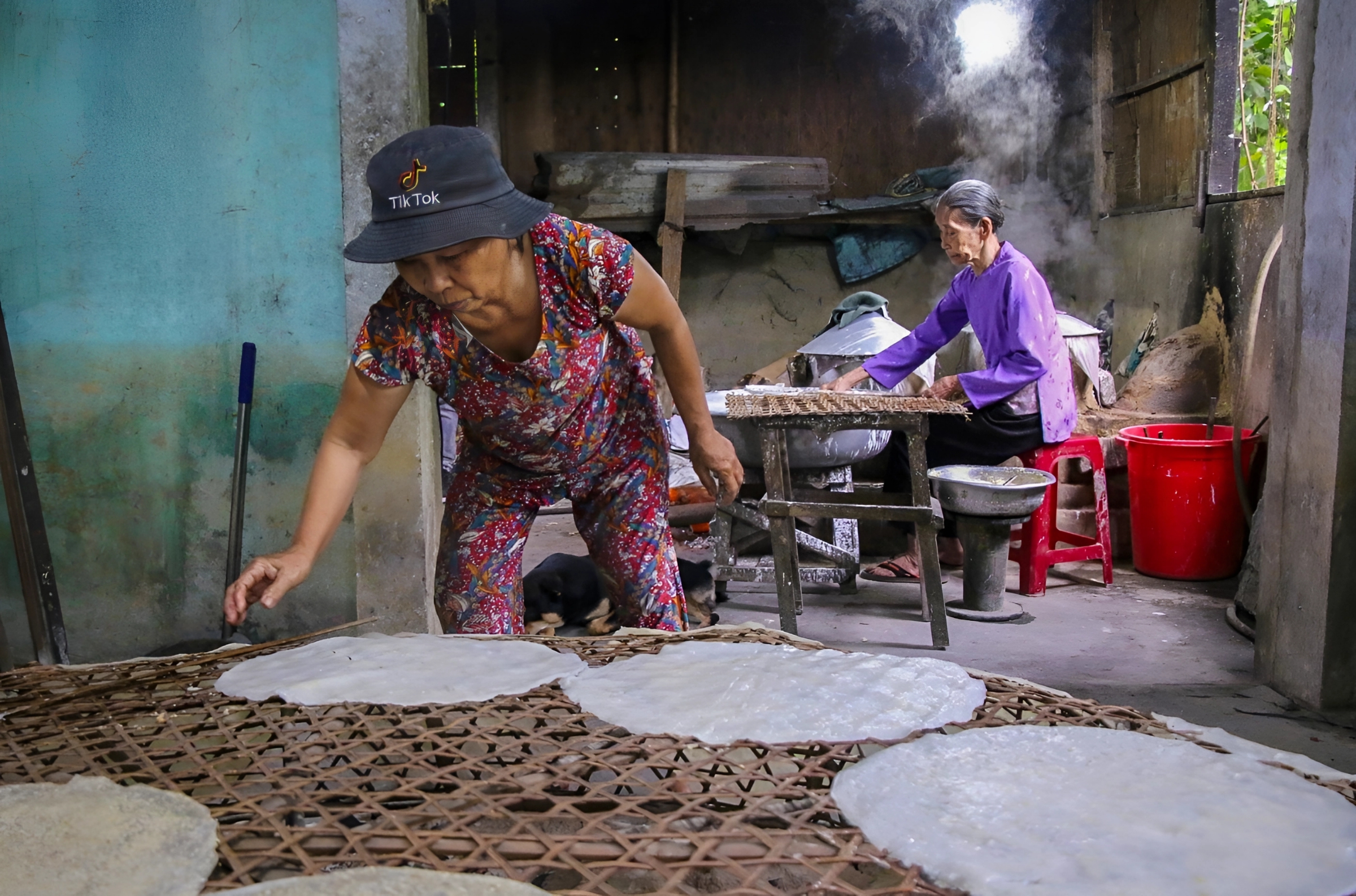
Tuy Loan rice paper is made entirely by hand and the villagers only make one type of grilled rice paper.
According to Mr. Phong, to have a batch of beautiful, quality rice paper, the worker must have skillful hands and must pay attention to the ingredients, soak the rice, know how to keep the furnace red and smoke the rice paper properly.
A delicious rice paper must be mixed with 5 spices: fish sauce, salt, sugar, sesame, garlic or ginger. This mixing method is considered the "secret" of the village to give the rice paper a unique flavor that cannot be found anywhere else.
To have round, beautiful cakes, the baker must be meticulous and steady.
In particular, Tuy Loan rice paper only uses Xiec 13/2 rice grown by the villagers themselves. This type of rice is hard when cooked but crispy when used as rice paper. The rice is soaked from the night before until dawn the next day and then ground into flour. Absolutely do not use other types of rice, to avoid the flour being too loose or not solidifying, which will tear the rice paper and not have the characteristic flavor.
To make the rice water smooth and white, Mr. Phong also has to filter it once to remove the rice husks. This helps create a product with an even color without rice husks.
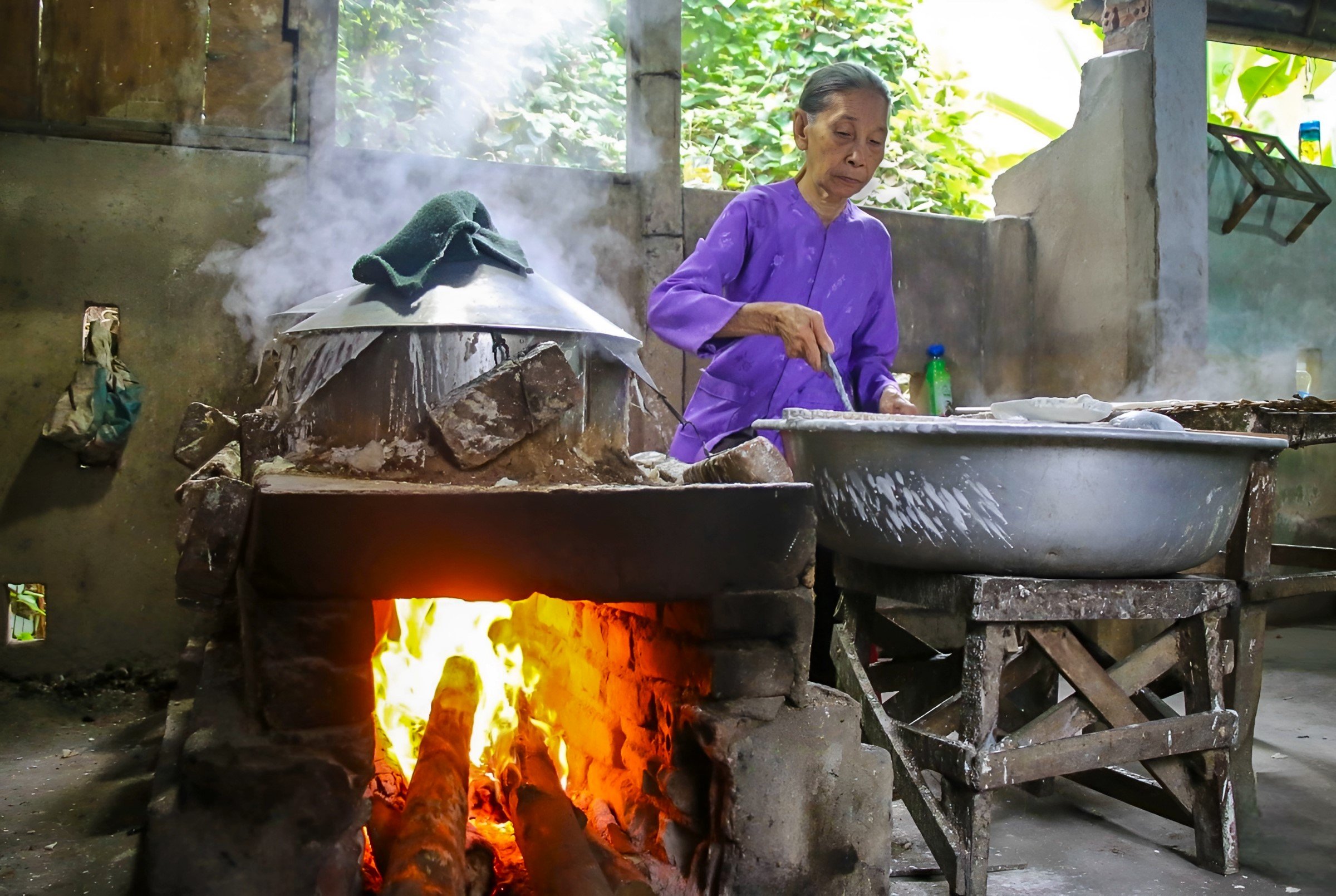
Tuy Loan rice paper maker Dang Thi Tuy Phong is excited that her village's traditional craft has become a national intangible cultural heritage.
In addition, the choice of charcoal is also quite important. You must choose good quality firewood and charcoal to light the oven red and have hot coals to dry the cake. When the coals are glowing red and the oven is blazing hot, that is when the making of the cake begins.
The time to complete a rice paper is about 3 to 5 minutes. The person spreading the dough must apply it evenly and round the cake. They must adjust the time by feeling and experience so that when spreading the cake, it will have two thick layers and be balanced.
"This job requires staying up late and waking up early, is hard work, and requires work for profit, but I still stick with it because it is not only a way to make a living but also to preserve the traditional cultural beauty of my homeland. I do it, my children do it, and my grandchildren will do it too," Mr. Phong confided.
Having helped her mother since she was a child, Ms. Nguyen Dang Thai Hoa (48 years old) is quite proficient in making rice paper. "Now that my mother is old and weak, I take over her job of making rice paper and continuing her career. This is the job that has supported the whole family since I was a child, so I really appreciate and preserve the secrets that my mother passed down," Ms. Hoa confided.
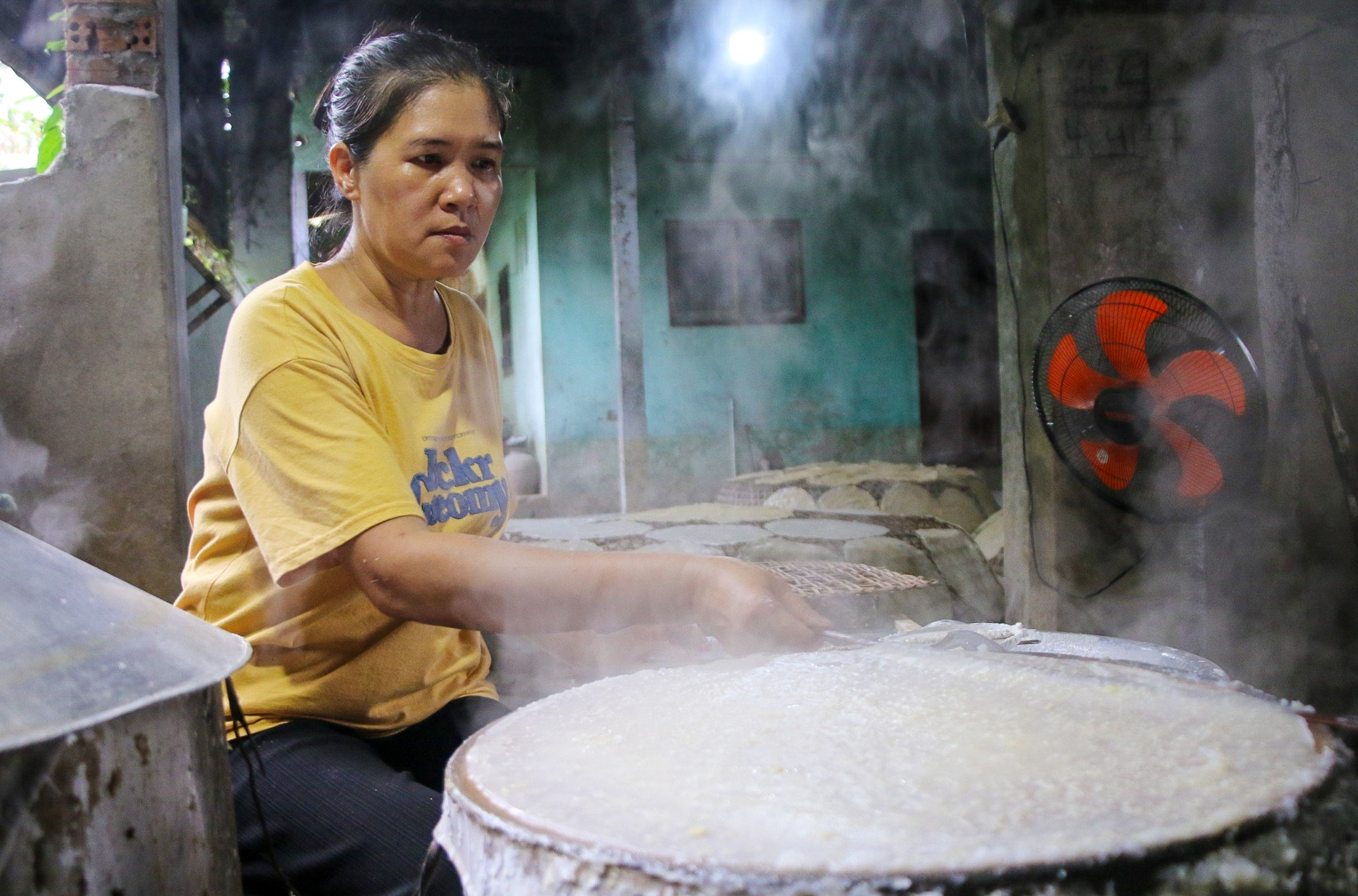
The cake is coated with 2 layers of flour...
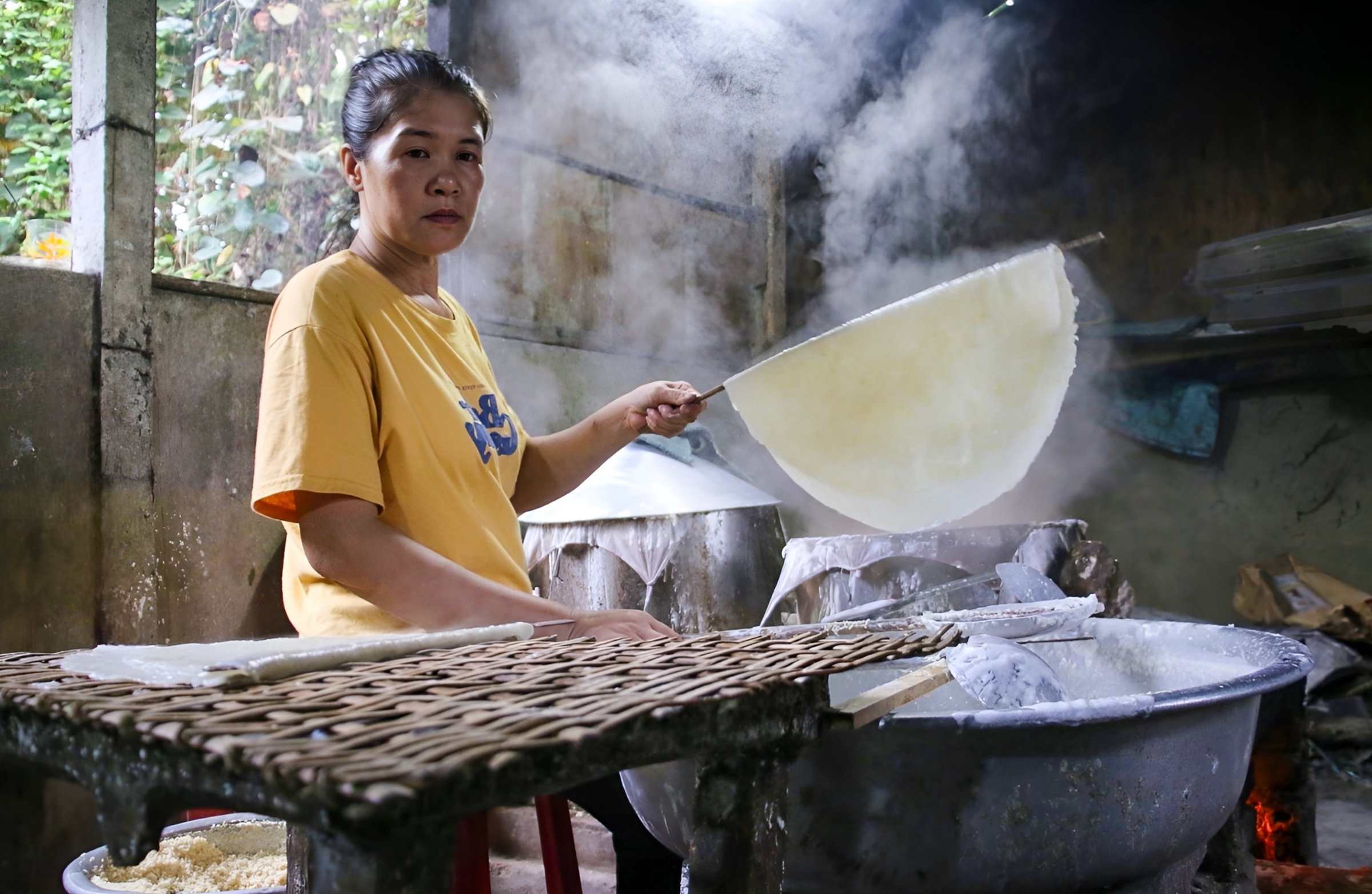
...and when cooked, Ms. Hoa took it out of the steamer with bamboo chopsticks.
Meticulously making each cake on a glowing charcoal stove, Mrs. Tran Thi Luyen (71 years old) confided that she is the third generation in her family to make traditional rice paper and has more than 50 years of experience, so she doesn't need to watch the time when making the cake, just need to look at the steam rising from the lid to know how done the cake is.
When the cake is cooked, Mr. Luyen uses a thin bamboo strip to remove it from under the cake and spread it on a woven bamboo tray to wait for the next step.
Unlike rice paper making villages in many localities, Tuy Loan people do not dry the rice paper in the sun, but the fresh rice paper from the oven is dried evenly on a charcoal grill.
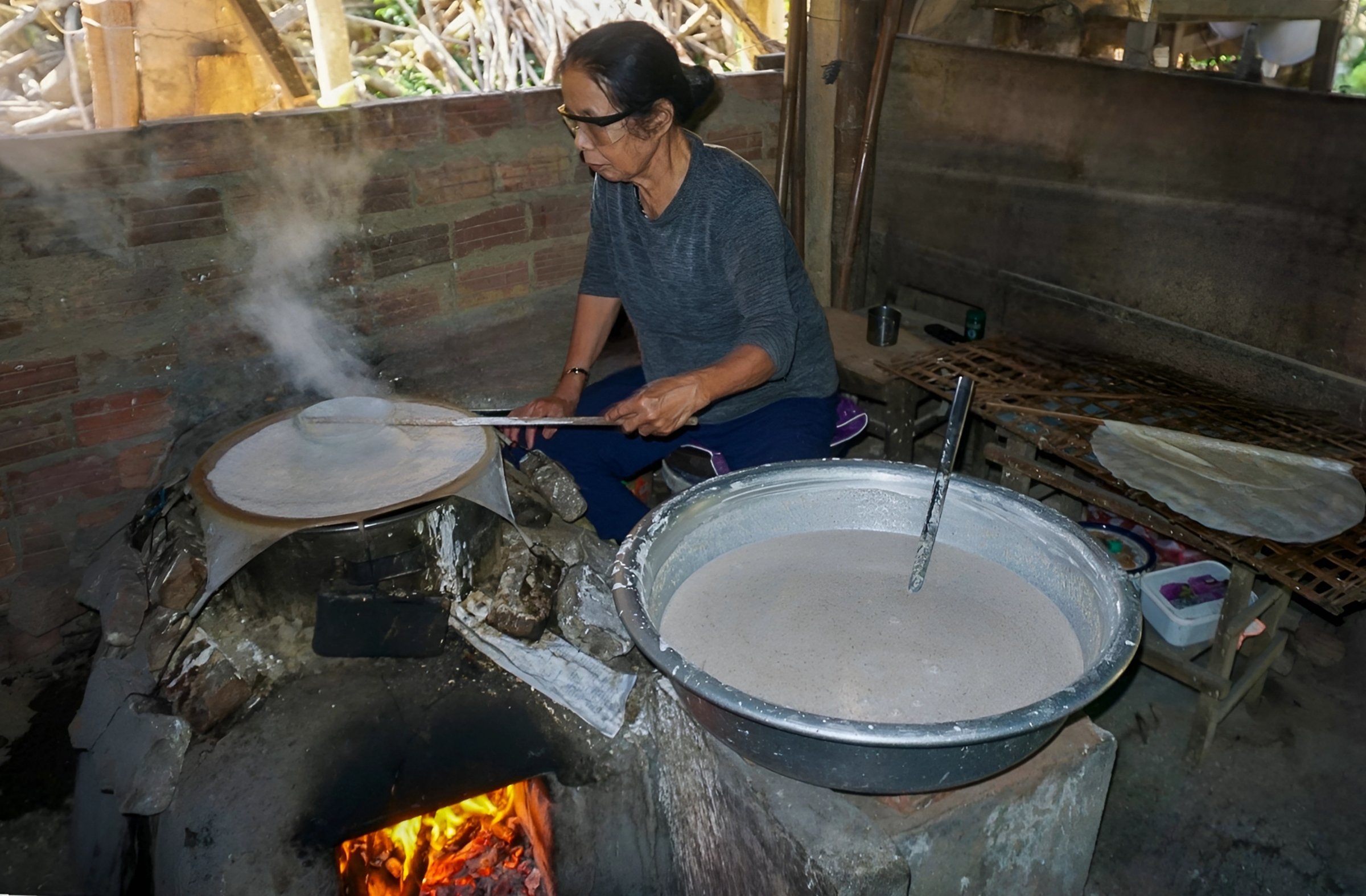
Every day, Mrs. Luyen's bakery makes about 200 cakes, selling for 220,000-270,000 VND/10 cakes.
In this way, the cake is placed on a bamboo cage with a diameter of nearly 3 meters, underneath is covered with ash, the charcoal in the oven is stirred out, using heat to dry the cake. Thanks to that, the cake is crispier and spongier than sun-dried cake, retaining the mild spiciness of ginger and garlic, the fatty taste of sesame mixed with rice flour to create a delicious, fragrant flavor.
Tuy Loan rice paper is dried in a bamboo cage, nearly 3 meters in diameter. The charcoal in the furnace is removed and spread under the cage, using the heat to dry the rice paper. The rice paper is dried in about 3 hours and then stacked up and stored.
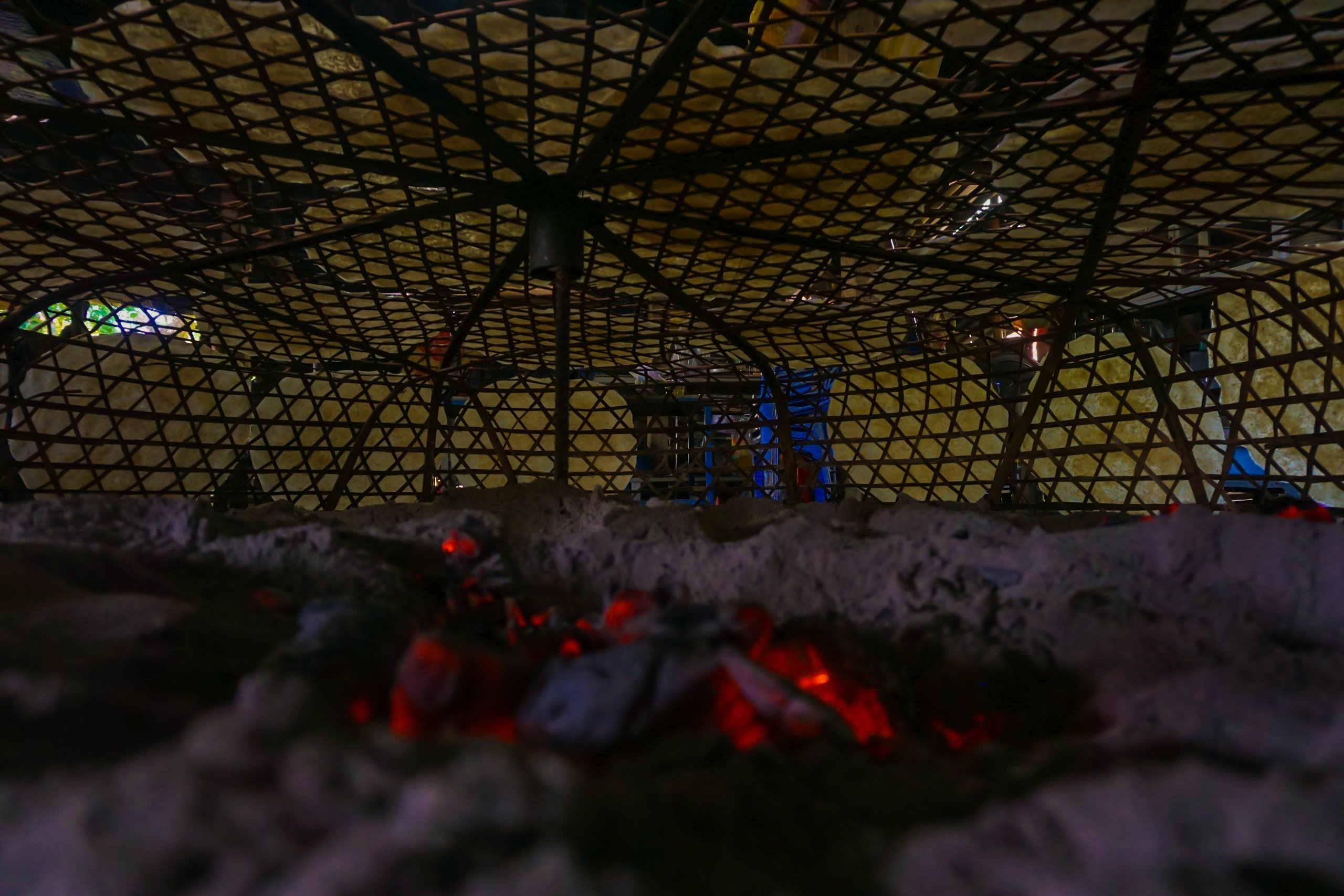
Rice paper is dried on a charcoal grill instead of in the sun.
"To make the cake delicious, it must be dried over hot coals at least 3 times, turning it frequently until it is slightly golden and fragrant, not "forced by fire" to dry it quickly. Because it is dried over charcoal, Tuy Loan rice paper can be kept all year round without worrying about mold. When eaten, it is very crispy and you can clearly feel the faint flavor of the spices," Ms. Luyen shared.
Following tourists "going abroad"
Tuy Loan rice paper is round, about 50 cm in diameter and is usually thicker than rice paper in other places. When eaten, it must be grilled until cooked, crispy and fragrant. In the past, people mainly grilled the cake with charcoal. Later, the cake can be grilled in an oven or microwave, which is also very convenient, although the quality will not be as good as grilled charcoal.
Quang Nam - Da Nang people use grilled rice paper to eat with many dishes such as Quang noodles, broken into small pieces to eat with salads or sandwiched with banh chung or banh tet. Anyone who has ever eaten Tuy Loan rice paper will remember its rustic, simple flavor.
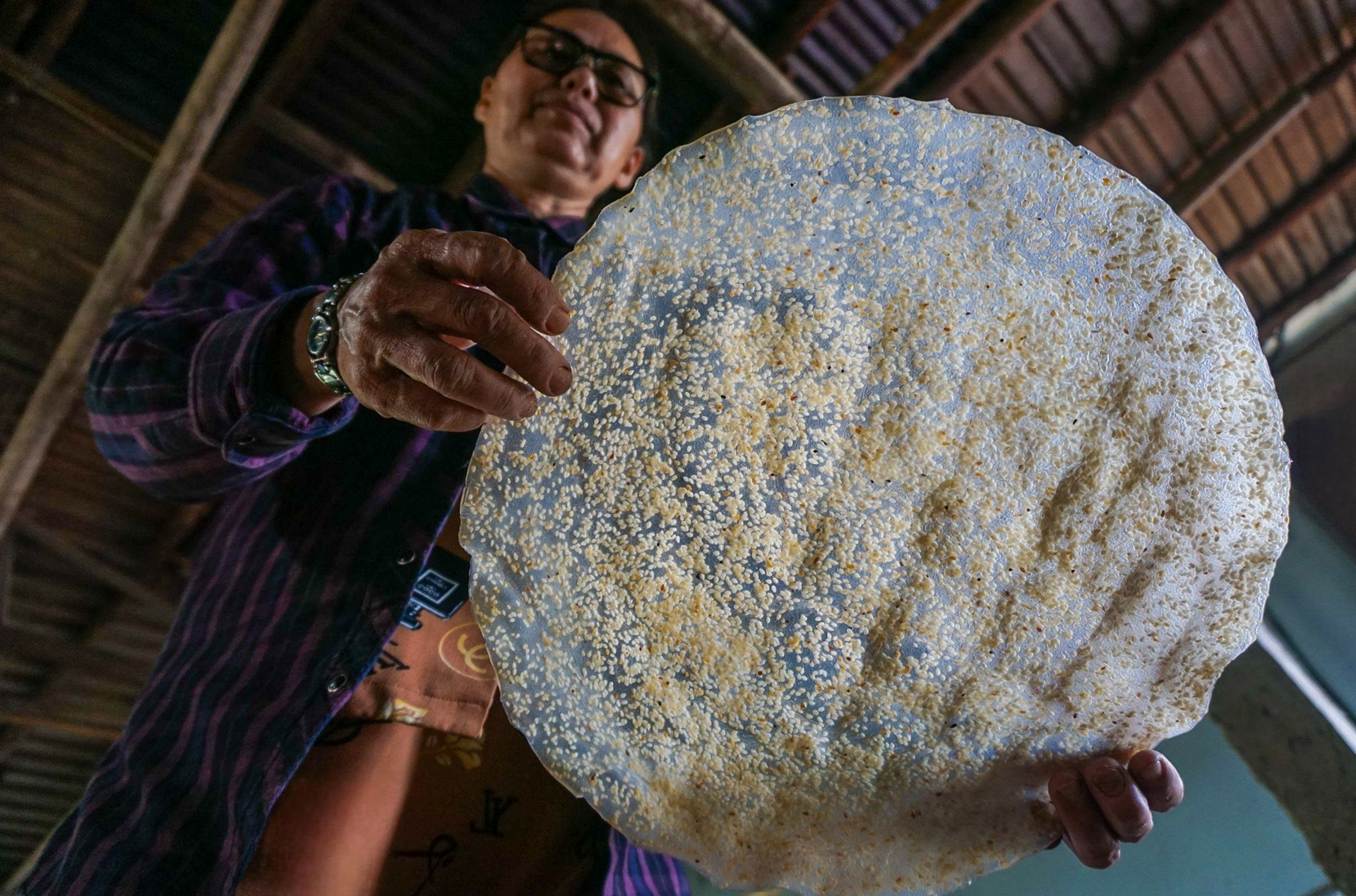
The finished Tuy Loan rice paper will have the aroma of garlic, ginger and the light sweetness of sugar.
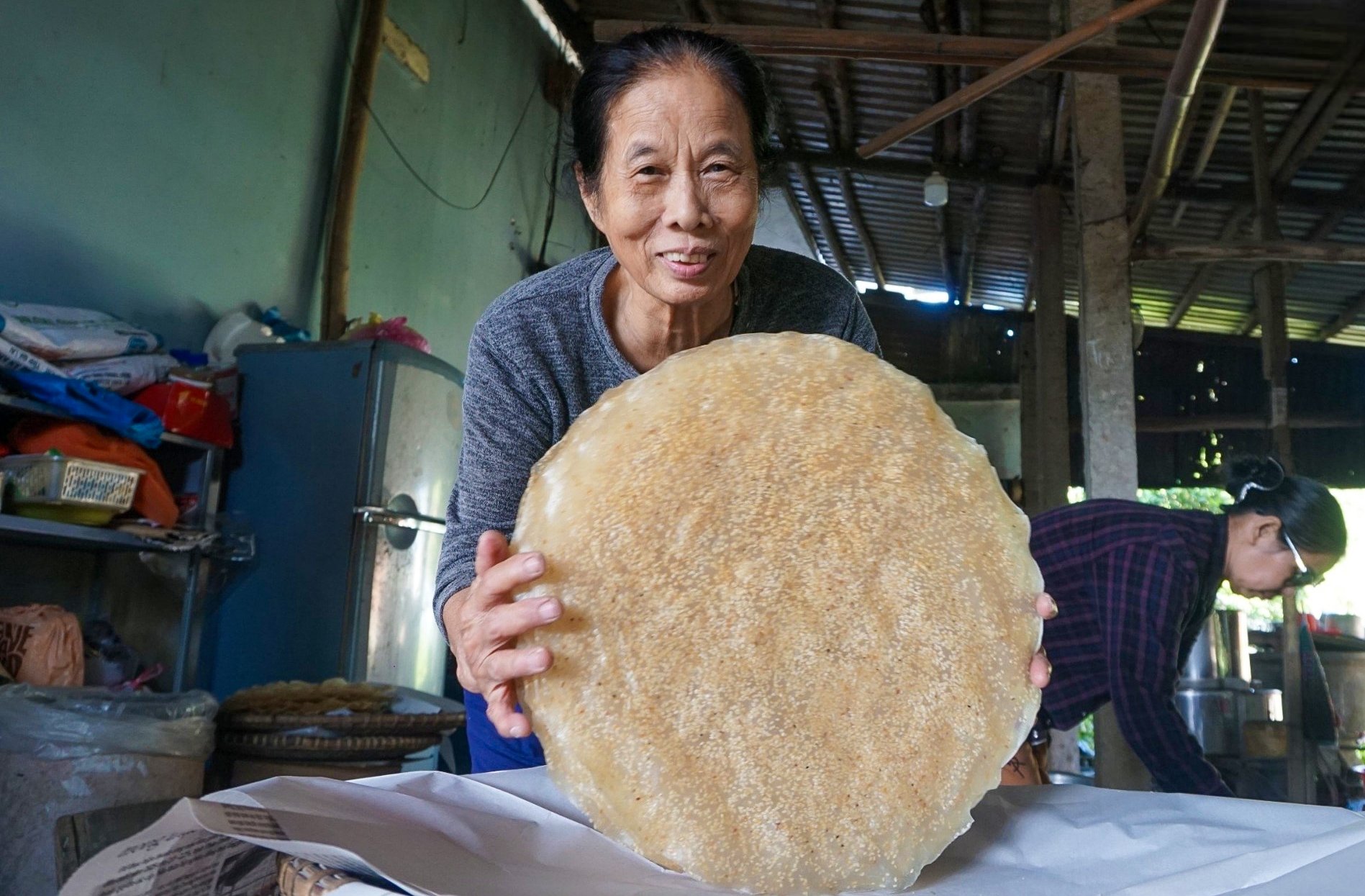
Rice paper is a specialty and pride of Tuy Loan villagers.
Nowadays, Tuy Loan rice paper is not only a familiar dish of the countryside, used to offer to the ancestors' altars on death anniversaries, traditional New Year's Day, and traditional festivals; but it also follows tourists and friends from all over the world and becomes a famous specialty of Da Nang.
In particular, at the Tuy Loan communal house festival held on the 9th and 10th of the first lunar month every year, Tuy Loan rice paper is an indispensable culinary product on the offering tray, with the meaning of remembering and showing gratitude to the ancestors who reclaimed the land to establish the village, forming traditional occupations that brought them a livelihood, including rice paper making.
During the festival, rice paper baking competitions are also held. This is an activity for rice paper artisans to demonstrate their skills and to contribute to honoring and preserving a long-standing traditional profession passed down from their ancestors.
With a special recipe, Tuy Loan rice paper is not only a familiar dish for locals but also follows tourists and international friends everywhere.
Not only welcomed in the domestic market, Tuy Loan rice paper now also follows tourists "overseas" to European countries... In addition, according to local people, some overseas Vietnamese, especially Hoa Vang people living in the US, Australia,... every time they return to visit their homeland and before leaving, they often order Tuy Loan rice paper to bring back as gifts.
Recently, the Ministry of Culture, Sports and Tourism has included the traditional craft of making Tuy Loan rice paper (Da Nang) in the List of National Intangible Cultural Heritage. This is an important basis for the locality to continue to preserve, maintain and further promote the value of this centuries-old craft village to attract tourists.
Source



![[Photo] Prime Minister Pham Minh Chinh chairs the Government's online conference with localities](https://vphoto.vietnam.vn/thumb/1200x675/vietnam/resource/IMAGE/2025/10/5/264793cfb4404c63a701d235ff43e1bd)

![[Photo] Prime Minister Pham Minh Chinh launched a peak emulation campaign to achieve achievements in celebration of the 14th National Party Congress](https://vphoto.vietnam.vn/thumb/1200x675/vietnam/resource/IMAGE/2025/10/5/8869ec5cdbc740f58fbf2ae73f065076)




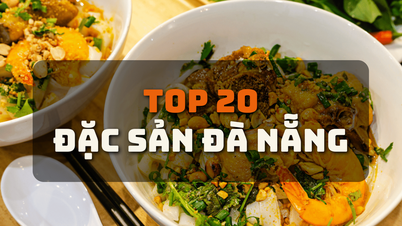

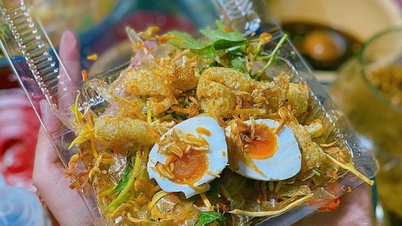

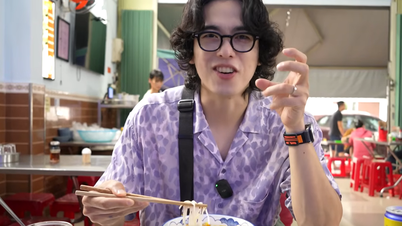
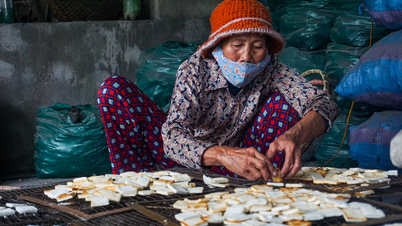

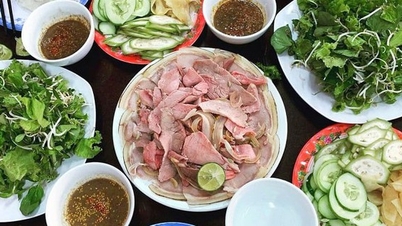





![[Video] Jelly Mooncakes: New Colors for the Mid-Autumn Festival](https://vphoto.vietnam.vn/thumb/402x226/vietnam/resource/IMAGE/2025/10/5/abb1d390ee7f452b9110fca494ba0d77)



![[Video] Traditional moon cakes attract customers](https://vphoto.vietnam.vn/thumb/402x226/vietnam/resource/IMAGE/2025/10/5/0a98992e8c92419fa9ea507de23e365d)







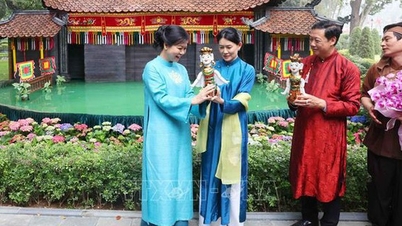



























![[VIDEO] Summary of Petrovietnam's 50th Anniversary Ceremony](https://vphoto.vietnam.vn/thumb/402x226/vietnam/resource/IMAGE/2025/10/4/abe133bdb8114793a16d4fe3e5bd0f12)

![[VIDEO] GENERAL SECRETARY TO LAM AWARDS PETROVIETNAM 8 GOLDEN WORDS: "PIONEER - EXCELLENT - SUSTAINABLE - GLOBAL"](https://vphoto.vietnam.vn/thumb/402x226/vietnam/resource/IMAGE/2025/7/23/c2fdb48863e846cfa9fb8e6ea9cf44e7)














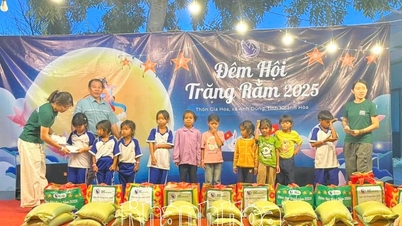


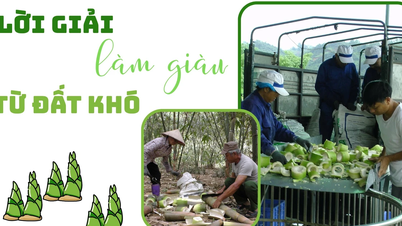

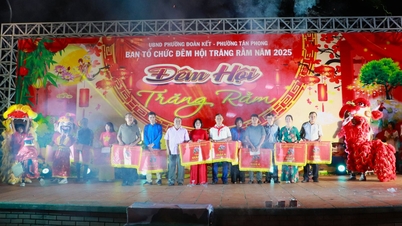
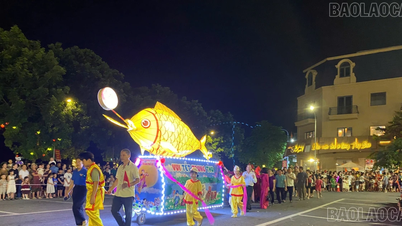














Comment (0)